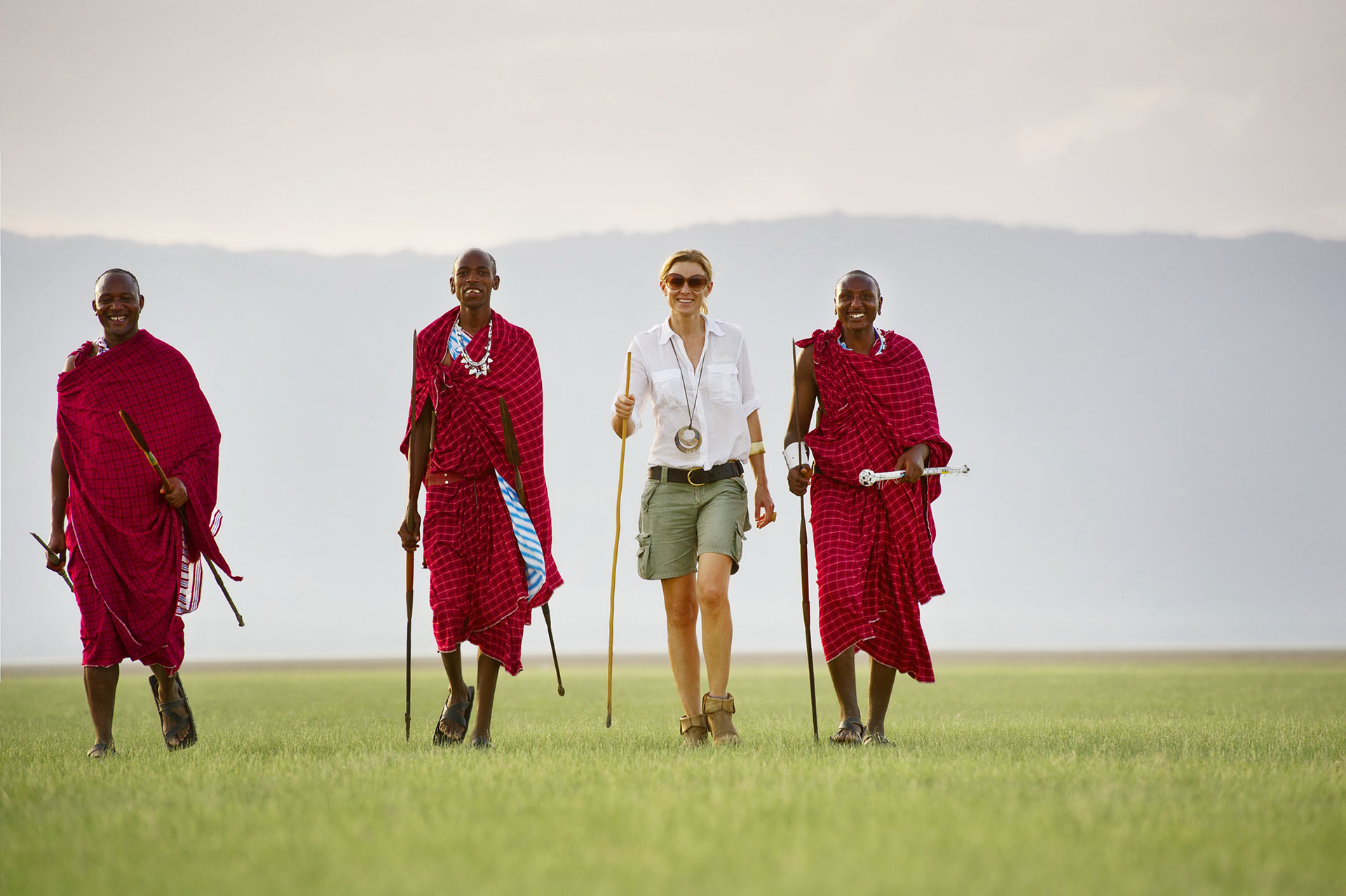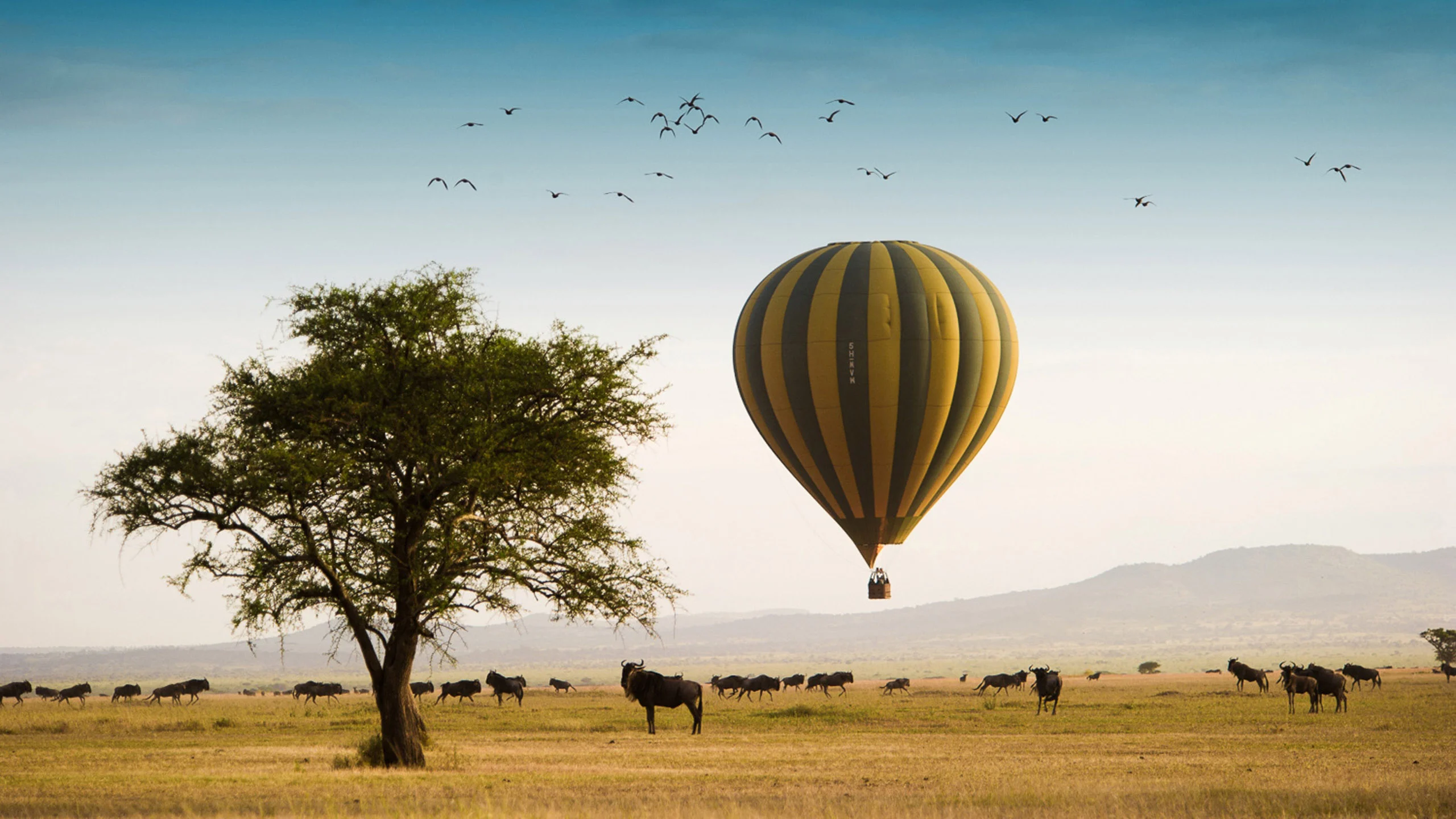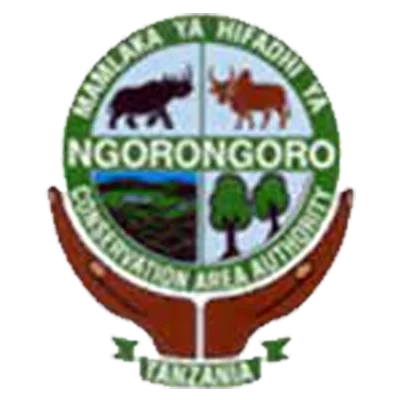Some of Africa’s most well-known national parks and natural landmarks, like the spectacular Mount Kilimanjaro, may be found in the incredible country that is Tanzania. Read our tips for the best things to do in Tanzania!
Safaris and other wildlife-related activities are the most well-liked activities in Tanzania and the main reasons people travel there, as well as the lovely beaches of Zanzibar, which appeal to anyone looking to spend some time basking in the sun.

With this list of the top attractions and best things to do in Tanzania, you can explore your options and find the best locations to visit.
1. Serengeti National Park
Millions of animals inhabit or pass through the huge, treeless plain that is Serengeti National Park in quest of new grasslands.
You may see some of the most well-known African animals here, but it is most famous for the yearly wildebeest migration.
In May or early June, more than 1.5 million wildebeest and tens of thousands of zebra and gazelle embark on their yearly migration.
One of nature’s most stunning spectacles, this migration serves as the main attraction for many visitors. Furthermore, the Serengeti is home to nearly 500 different bird species.
Tens of thousands of tourists visit Tanzania’s second-largest national park, the Serengeti, every year.
June through September are the best months to see wildlife in Serengeti National Park.
2. Zanzibar Beaches

The Tanzanian island of Zanzibar, also known as Unguja, is a popular vacation spot and is renowned for its stunning beaches.
This island is a part of the Zanzibar archipelago, which also includes Pemba. It boasts some of the best beaches in the world.
Visitors will find beautiful white beaches, clear shallow water, and traditional boats lining the shore. The surf varies depending on which side of the island you are on.
3. Mount Kilimanjaro
Tanzania’s most famous image is Mount Kilimanjaro (5,895 m), which is Africa’s tallest mountain.
Unlike other parks in northern Tanzania, people visit Mount Kilimanjaro National Park more for the opportunity to admire the stunning snow-capped mountain and, for many, to attempt the ascent.
Although Mount Kilimanjaro may be climbed year-round, the optimum time to do it is from late June to October, when the weather is dry.
Over a million years ago, volcanic action in the Rift Valley built Kilimanjaro, a World Heritage Site.
Shira, Kibo, and Mawenzi are three volcanic cones that formed around 750,000 years ago. Uhuru Peak atop Kibo, one of the Seven Summits of the globe, is the highest peak.
The mountain rises from the agricultural area at its base to a rainforest, an alpine meadow, and finally a lunar environment at its highest point.
Elephants, buffalo, monkeys, and leopards can be seen living on the slopes of the jungle, while bird watchers will find a wide variety of birds in the alpine region.
Although no project is currently underway, the government approved a plan to construct a cable car on Mount Kilimanjaro in late 2020.
If it were built, visitors would reach 3,700 meters above sea level.
4. Ngorongoro Conservation Area

The famed volcanic Ngorongoro Crater is found in the Ngorongoro Conservation Area, which is one of Tanzania’s most popular places to see animals.
It is situated halfway between the Serengeti and Lake Manyara.
Numerous creatures are attracted to this massive volcanic crater because it always has water available, meaning there is no need for them to migrate.
The main reasons people visit this place are to see big animals and to observe birds.
Thousands of species, including lions, elephants, rhinos, Thomson’s gazelles, and buffalo, can be seen on the crater floor, but more than half of the animals that live in the Ngorongoro Crater are wildebeests and zebras.
The best places for bird watching are near Lake Magadi, where groups of flamingos congregate in the shallows.
Hippos are pleased to spend the day submerged and the evening grazing on the adjacent grass.
The Ngorongoro Crater, which is around three million years old, is the world’s largest preserved ancient caldera.
Before it erupted and fell, the Ngorongoro volcano was among the tallest mountains in the world.
The Olduvai Gorge is another interesting feature of the conservation area.
Ancient skulls and bone fragments discovered at this significant archeological site have provided valuable information about the earliest human populations.
Olduvai Gorge, which is located on a number of fault lines, has been the discovery of ancient human remains and fossils thanks to millennia of erosion.
In 1911, a German professor was searching for butterflies when he came across some fossilized bones in the Olduvai Gorge.
The Leakeys gathered bones that were estimated to be about 2 million years old, a skull, and portions of it during a subsequent expedition.
In Olduvai Gorge, tools and hunting equipment dating to between one and five million years ago were also found.
The iconic footprints of a man, woman, and infant at Laetoli, close to Olduvai, were another thrilling discovery.
Additional proof that at least three hominid species lived in this area over two million years ago can be found in these and other findings.
5. Mafia Island
Divers and snorkelers travel from all over the world to Mafia Island to explore the underwater environment that the Mafia Island Marine Park protects.
While Mafia Island experiences its greatest weather from May to October, the best diving conditions are from October to March.
Mafia Island Marine Park is home to a wide diversity of species, incredible coral gardens, and a calm diving environment.
The area is home to around 400 different types of fish and numerous bird species. Additionally, the green turtle, which is sadly on the verge of extinction, has its historical breeding grounds on Mafia Island.
Mafia is a popular spot for deep-sea fishing, particularly for big-game fish like tuna, marlin, sailfish, and others.
6. Tarangire National Park

The 1970-founded Tarangire National Park is an excellent place to see animals.
The best time to go is during the dry season, which is from July to September, when animals congregate near the river.
A large number of migratory animals gather in the lagoons of Tarangire National Park during the dry season, including wildebeest, zebra, buffalo, impala, gazelle, hartebeest, and eland.
The park is renowned for several other things as well, including the abundance of elephants there and the baobab trees that dot the green landscape.
With more than 300 kinds of birds documented in Tarangire, the park is great for birdwatching. Buzzards, vultures, herons, storks, kites, falcons, and eagles are some of these species.
7. Pemba Island
The northernmost island in the Zanzibar archipelago is Pemba Island. There are several desert islands near Pemba, and the visibility for scuba diving in the Indian Ocean is unmatched.
The underwater paradise is home to sea fans, coral gardens, and colourful sponges. The primary population centre on Pemba, Chake Chake, is a well-liked base for scuba divers.
Pemba has a more relaxed attitude than Zanzibar because it is less frequently visited.
The island has become well-liked among mountain bikers who are lured to the 1,000-metre peaks, which are rugged with deep valleys.
Misali Island Beach is a must-visit location nearby. On a tropical island that is uninhabited, there is a stunning white sand beach.
Pemba is a significant producer of cloves globally and is renowned for its juju traditions of healing and magic.
People travel from all across East Africa to study with the traditional and voodoo healers or look for a cure.
8. Lake Manyara National Park
The landscape of Lake Manyara National Park is made up of wetlands, meadows, and forests.
Two-thirds of the park is submerged in water, and Lake Manyara is home to a variety of birds, including thousands of flamingos during specific times of the year.
The abundance of elephants, lions that can scale trees, and hippos that may be seen in Lake Manyara at a much closer range than in other parks are its main attractions.
The world’s highest population of baboons resides in this park.
The most well-liked activities in Lake Manyara National Park include bird watching, canoeing, mountain biking excursions, and wildlife drives.
9. Nyerere National Park (Formally known as Selous Game Reserve)

Nyerere National Park is the largest game reserve in Africa. It was founded in 1922 and occupies 5% of all of Tanzania. The southern region is a banned region.
It is undeveloped, extremely forested, and full of cliffs. Only the region north of the Rufiji River is accessible to travellers.
Large open grasslands, woods, rivers, hills, and plains can all be found in this region of the Julius Nyerere National Park.
The Julius Nyerere National Park is divided by the Rufiji River, which has the biggest catchment area of any river in East Africa.
The river is a significant element of the reserve and offers the chance to observe a variety of aquatic animals. Elephants, hippos, and rhinos can all be seen there, along with buffalo, antelope, giraffes, warthogs, wildebeest, lions, leopards, and cheetahs.
In Nyerere National Park, there are more than 350 species of birds that have been identified.
10. Stone Town
Zanzibar’s cultural centre, Stone Town, hasn’t undergone much alteration in the past 200 years.
The city’s distinct beauty comes from the grand old Arabian mansions that line the winding lanes and twisting streets.
When Zanzibar was one of the most significant Swahili trading towns in the Indian Ocean in the nineteenth century, the majority of the homes in Stone Town were constructed.
Many of the homes have finely carved wooden doors that are bras-studded and visible to visitors.
Many of Stone Town’s famous landmarks have been brought back to their former splendour as the oldest continuously inhabited Swahili city in the world.
Several of the old structures are now museums or tourist destinations. A few intriguing antique churches with historical significance can be found throughout the town.
The Darajani Market, Beit el-Amani, City Hall, and the Anglican Cathedral are all located in the old Stone Town region, which may be reached by strolling down Creek Road.
The Forodhani Gardens, the Old Dispensary with its carved wooden balconies, the ancient residence of the sultans known as Beit el-Sahel or the People’s Palace, the Hamamni Persian Baths, erected in 1888, and the Old Fort, Stone Town’s oldest building, are some of the other major attractions.
11. Lake Victoria
Kenya, Tanzania, and Uganda surround Lake Victoria, the biggest freshwater lake in Africa. Millions of people live near this lake, which feeds the White Nile and generates revenue for them.
One of the least frequented areas of the nation is the Tanzanian portion of Lake Victoria, yet the cities of Bukoba, Musoma, and Mwanza contain a variety of attractions.
A few of the islands that are close to Mwanza and Musoma have turned into wildlife sanctuaries.
Boat tours or treks can be planned around Lake Victoria, and bird-watching and fishing trips are popular adventures.
On the southwest coast of Lake Victoria, there is a park called Rubondo Island National Park that contains a number of additional smaller islands.
12. Gombe Stream National Park

Gombe National Park, sometimes known as Gombe Stream National Park on occasion, caters mostly to tourists looking to get off the beaten path and observe chimpanzees.
Jane Goodall made this destination, one of Tanzania’s smallest national parks, famous through her research.
The British researcher first came to the country in 1960 to study chimpanzees in the wild, but her work eventually led to the creation of the world’s longest-running behavioural research project.
Visitors can enter the forest on guided treks to see chimpanzees in their natural habitat. The park is home to numerous primates and animal species.
The tropical forest is home to over 200 bird species, including barbets, starlings, sunbirds, crowned eagles, kingfishers, and palm-nut vultures.
Other popular activities include hiking and swimming; a trail enters the forest and leads to a waterfall in a valley.
13. Katavi National Park

The secluded Katavi National Park is home to unspoiled nature.
The massive flood plain, which is divided by the Katuma River and various seasonal lakes, is a defining characteristic of Katavi.
Large herds of hippos, crocodiles, and more than 400 bird species can be seen in the lakes.
Hippos during the end of the dry season, when as many as 200 attempt to fit into a pool of water, are one of the attractions in Katavi.
The dry season brings Katavi National Park to life; at the last remaining ponds and streams, herds of impala, reedbuck, lions, zebras, and giraffes can be observed.
When the flood waters recede, tens of thousands of elephants and buffalo also congregate in the park.
14. Arusha National Park
Despite being smaller than other national parks in Tanzania, Arusha has a variety of habitats, including Mount Meru’s forest, the Ngurdoto Crater in the southeast, and the Momella Lakes, a collection of seven crater lakes.
While herds of buffalo, zebra, and warthog are scattered around the swampy bottom of the crater, black and white Colobus monkeys are visible in the surrounding forest.
A wide variety of resident and migratory waterbirds call Momella Lakes home.
Visitors come here to view the local wildlife and to climb Mount Meru, Tanzania’s second-highest mountain and one of Africa’s stunning volcanoes.
A thin slope that leads to the peak offers breathtaking views of the volcanic cone that is located in the crater at a height of several thousand feet below.
Although there is a hard elevation, the route also travels through parkland, a forest, a large area of heather, and moorland.
15. Ruaha National Park

Tanzania’s largest park, Ruaha National Park, was established in 2008. It contains one of Tanzania’s highest densities of elephants and vast herds of buffalo and gazelle.
Ruaha National Park’s primary feature is the Great Ruaha River, which offers breathtaking wildlife viewing along its banks.
Through a hydroelectric plant at Kidatu, the river also contributes significantly to Tanzania’s electrical needs.
Because Ruaha National Park is the least visited park in Tanzania, the environment there is still largely unspoiled.
Over 400 species of birds that are not present in northern Tanzania can be enjoyed by birdwatchers, while photographers are drawn in particular by the river, breathtaking gorges, and towering trees.
Frequently Asked Questions
When Is The Best Time To Go On A Safari In Tanzania?
The long dry season, which lasts from July through October, is the ideal time to visit Tanzania.
The Great Migration, treks, safaris, and Zanzibar beach vacations are all at their best during these months.
The busiest time of year to visit Tanzania is around July. Elephants are congregating at Tarangire National Park as the migration approaches Kenya.
The Big Five are more likely to be seen in August because animals begin looking for water sources, making their movements predictable for guides.
Flamingos also flock in large numbers to Lake Natron because they may find food and refuge there.
The migratory herds of wildebeest and zebra are dispersed across the Serengeti in September, the last month of the peak season.
The Mara River, which flows from Kenya’s Northern Serengeti, is their main barrier. It can be thrilling to see herds of wildebeest desperately swim through crocodile-infested waters.
For those fascinated by the wildebeest population, visiting near the end of January is a great time to see the calving season on the Ndutu Plains.
Where Are The Best Beaches In Tanzania?
On the island of Zanzibar, whose unbelievably white sands are lapped by turquoise waters, you’ll find Tanzania’s greatest beaches.
Nungwi Beach, Kendwa Beach, and Paje Beach, one of the best kiteboarding beaches on the island, are a few of the best beaches.
Other significant runners-up are situated on Mafia Island and Pemba Island, especially Misali Island Beach and Utende Beach.
What Is The Best Town For Tourism In Tanzania?
One of the top tourist towns in the world is Stone Town in Zanzibar.
Visitors can interact with the welcoming residents, wander the narrow alleyways, or go to the Old Fort, a stunning historic structure in the town that was erected by the Omani Arabs to defend themselves from the Portuguese.
The picturesque Forodhani Night Food Market offers mouthwatering street food for visitors to savor.
The town is spectacular and unique because of the gorgeous Swahili architecture, the vibrant and busy marketplaces, and the breathtaking ocean vista.
Is Tanzania Worth Visiting?
Tanzania genuinely has something to offer every kind of traveler.
Incredible game reserves filled with wildlife, beautiful beaches, opulent lodging, and amazing culture and cuisine are just a few of the attractions.
What are the best things to do in Tanzania? Our Final Word
When visiting Tanzania, it’s important to plan out everything you want to do to make the most of your trip.
As you make your itinerary for your vacation, consider visiting these must-see tourist destinations.
Visiting each one of our list of 15 best things to do in Tanzania will give you an incredible insight into the country and will make your trip incredibly memorable.











